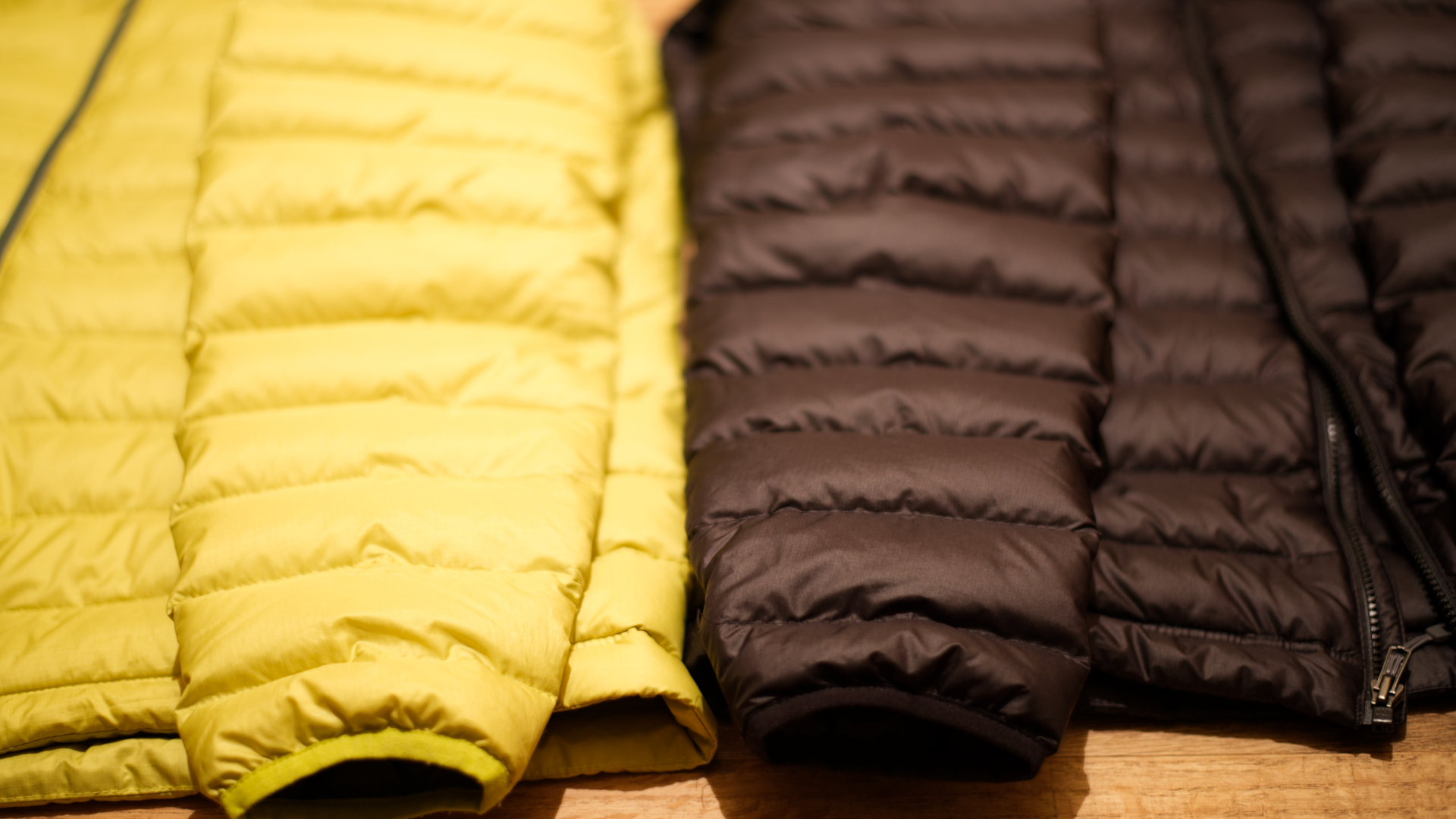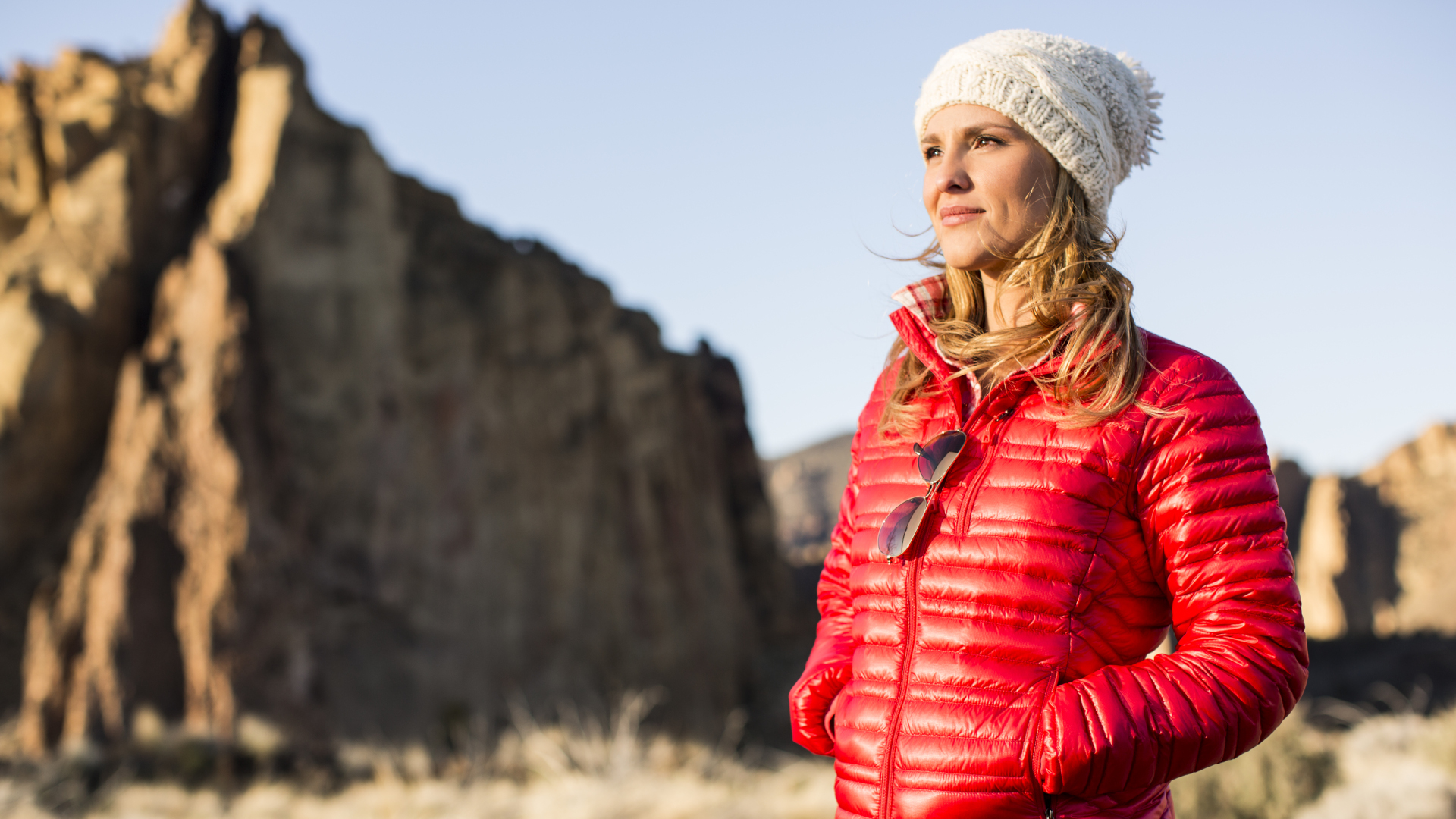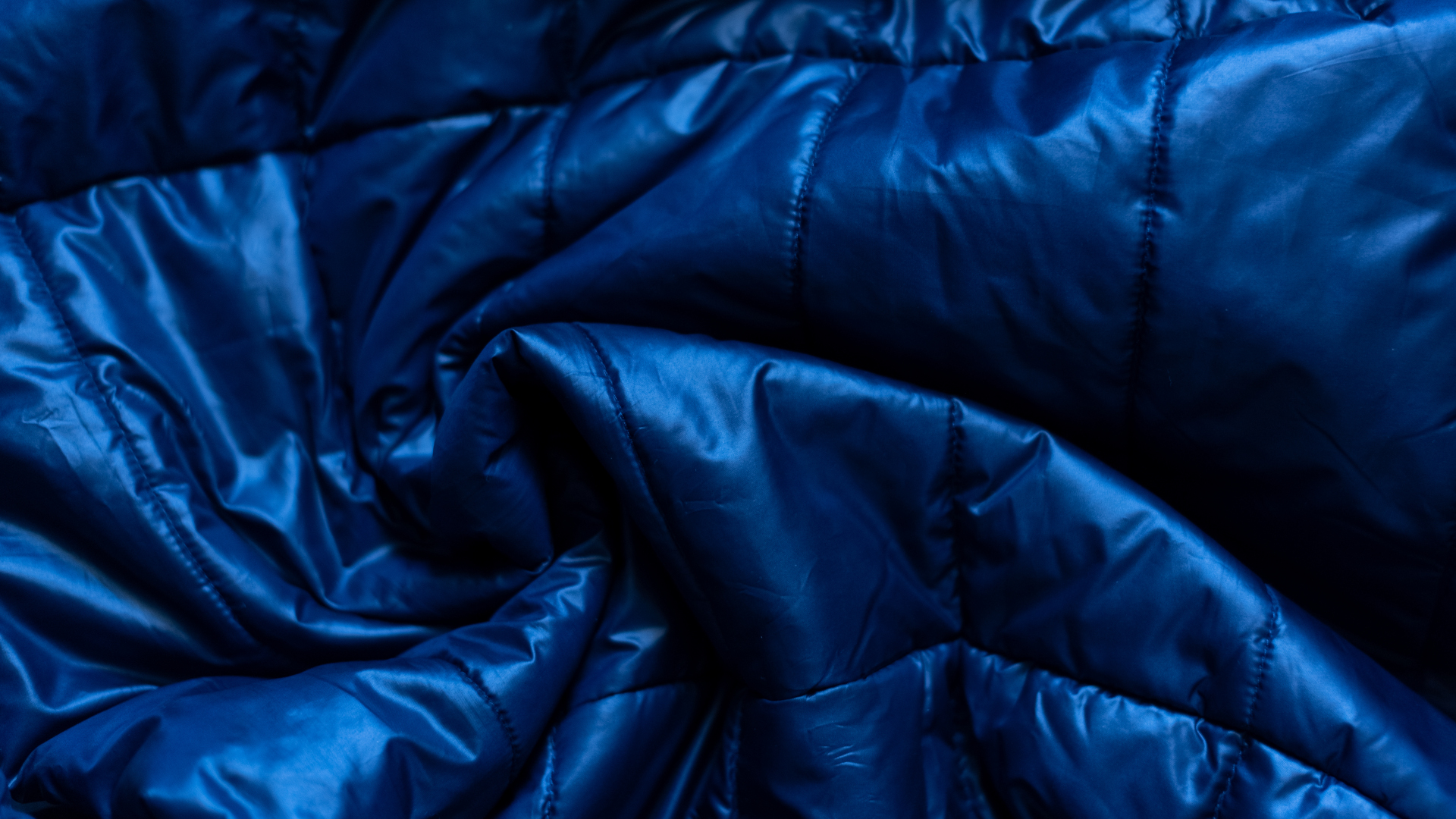How to patch a down jacket the easy way
We talk you through the delicate operation of how to patch a down jacket so you can stop leaking feathers and stay warm all winter

Snagging your sleeve on a stray branch or wayward tent pole is usually nothing to cry over, unless you’re wearing your down jacket, in which case it can be a sad and costly mess. Your down jacket is one of the pricier items in your outdoor kit after all and a hole in it doesn't just look unsightly – it means you slowly leak insulating fill and ultimately, warmth. Knowing how to patch a down jacket can turn a gear disaster into no big deal, however, and we’re here to show you how.
A hole in a down jacket can’t really be fixed with a good old fashioned needle and thread, while using an iron on patch can be a recipe for a melted down jacket. The result is that many of us end up walking around with duct tape holding our jackets together, which works quite well but doesn't look great and loses its stickiness in the wash.
Adhesive tape patches are definitely the best solution for patching your down jacket, but don’t just whack one on before your next adventure. There are a few steps to take when it comes to performing successful surgery on your puffer (needless to say, this works for your down sleeping bag too) and when you're finished, make sure to read our tips on washing and caring for your down jacket too.
How to patch a down jacket

You want to patch your down jacket when you have a couple of days where you won’t need to wear it. Once you’ve got it scheduled, you’ll need the following items:
- Adhesive gear patch
- Rubbing alcohol
- A clean cloth
- Tweezers
When you’ve gathered these items, lay your jacket out on a broad, flat surface and make sure none of it is hanging over the edge where it might slide off while you’re working. To patch your down jacket, follow these steps:
1. Clean the area around the tear
Of course you don’t want to put your jacket in the washing machine when it has a hole or you’ll lose more feathers, but you do need to clean the area around the tear in case there are oils or dirt that will impede the adhesiveness of the patch. The best way to do this is to put a little rubbing alcohol on a clean cloth and gently wipe the area around the hole, then set the jacket aside to dry.
2. Prepare the tear
If there are any loose threads, trim them rather than pulling them out. If there are any feathers poking out, don’t pull them out; rather, use your finger or a pair of tweezers to coax them back inside.
All the latest inspiration, tips and guides to help you plan your next Advnture!

3. Ready the patch
Turn the patch over and on the back of the patch, draw a circle that is at least 1/2" in diameter larger than the hole, then cut the patch out with scissors. Before going any further, check that the patch is big enough by laying it over the hole.
4. Apply the patch
Now, you have two options. If you’re not too worried about aesthetics, you can just stick the patch over the hole on the outside of the jacket, which is easier. Arrange the edges of the tear so they touch then apply the patch. You can use your fingernail or a plastic ruler to press down on the patch to smooth out any air bubbles and make sure the patch is well adhered.
If you’d rather the patch not be visible, and the hole is big enough, rather than stick the patch on the outside of the jacket, you can instead apply it on the inside. For this method, pick up the patch using the tweezers and use your fingers to make the opening of the hole big enough that you can carefully slide the patch, adhesive side up, inside the hole. Once it’s inside, arrange the edges of the hole so that they touch, meaning none of the adhesive can be felt on the outside of your jacket. Smooth the fabric down over the patch.
Whichever option you choose, set the jacket aside for at least 24 hours to allow the patch to adhere properly, then you can get it back outdoors.
Julia Clarke is a staff writer for Advnture.com and the author of the book Restorative Yoga for Beginners. She loves to explore mountains on foot, bike, skis and belay and then recover on the the yoga mat. Julia graduated with a degree in journalism in 2004 and spent eight years working as a radio presenter in Kansas City, Vermont, Boston and New York City before discovering the joys of the Rocky Mountains. She then detoured west to Colorado and enjoyed 11 years teaching yoga in Vail before returning to her hometown of Glasgow, Scotland in 2020 to focus on family and writing.

